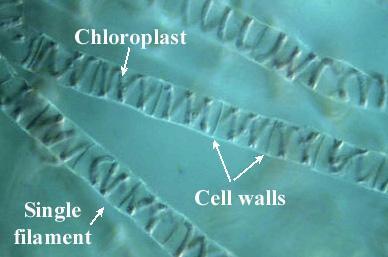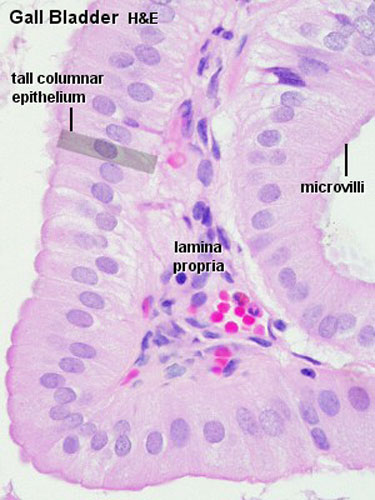44 label and function of microscope
Compound Microscope Parts - Labeled Diagram and their Functions - Rs ... The term "compound" refers to the microscope having more than one lens. Basically, compound microscopes generate magnified images through an aligned pair of the objective lens and the ocular lens. In contrast, "simple microscopes" have only one convex lens and function more like glass magnifiers. Types of Microscopes: Definition, Working Principle, Diagram ... A compound microscope is defined as the type of microscope that has more than one lens. It has a combination of lenses and two optical parts known as an objective lens and eyepiece or ocular lens. The magnifying power of the compound microscope is given as: m = D f o × L f e Where, D is the least distance of distinct vision
Compound Microscope: Definition, Diagram, Parts, Uses, Working ... - BYJUS A compound microscope is defined as. A microscope with a high resolution and uses two sets of lenses providing a 2-dimensional image of the sample. The term compound refers to the usage of more than one lens in the microscope. Also, the compound microscope is one of the types of optical microscopes. The other type of optical microscope is a ...
Label and function of microscope
Microscope Parts and Functions First, the purpose of a microscope is to magnify a small object or to magnify the fine details of a larger object in order to examine minute specimens that cannot be seen by the naked eye. Here are the important compound microscope parts... Eyepiece: The lens the viewer looks through to see the specimen. Brightfield Microscope (Compound Light Microscope)- Definition ... The functioning of the microscope is based on its ability to produce a high-resolution image from an adequately provided light source, focused on the image, producing a high-quality image. The specimen which is placed on a microscopic slide is viewed under oil immersion or/and covered with a coverslip. Parts of Brightfield Microscope What is the functions of microscope? - AskingLot.com First, the purpose of a microscope is to magnify a small object or to magnify the fine details of a larger object in order to examine minute specimens that cannot be seen by the naked eye. Click to see full answer. Hereof, what is microscope and its function? The microscope is one of the most important tools used in chemistry and biology.
Label and function of microscope. Microscope labeling and functions Flashcards | Quizlet Microscope labeling and functions. STUDY. Flashcards. Learn. Write. Spell. Test. PLAY. Match. Gravity. Created by. mveet. Terms in this set (27) Separates the eyepiece lens from the objective lenses. Body Tube. Holds the low-power and high-power objective lenses; allows the lenses to rotate for viewing. Microscope Parts, Function, & Labeled Diagram - slidingmotion Microscope Parts Labeled Diagram The principle of the Microscope gives you an exact reason to use it. It works on the 3 principles. Magnification Resolving Power Numerical Aperture. Parts of Microscope Head Base Arm Eyepiece Lens Eyepiece Tube Objective Lenses Nose Piece Adjustment Knobs Stage Aperture Microscopic Illuminator Condenser Lens Compound Microscope Parts, Functions, and Labeled Diagram Each part of the compound microscope serves its own unique function, with each being important to the function of the scope as a whole. The individual parts of a compound microscope can vary heavily depending on the configuration & applications that the scope is being used for. Common compound microscope parts include: Parts of a microscope with functions and labeled diagram Microscopes are made up of lenses for magnification, each with its own magnification powers. Depending on the type of lens, it will magnify the specimen according to its focal strength. Their ability to function is because they have been constructed with special components that enable them to achieve high magnification levels.
Microscope Parts & Functions - AmScope Invented by a Dutch spectacle maker in the late 16th century, compound light microscopes use two sets of lenses to magnify images for study and observation. The first set of lenses are the oculars, or eyepieces, that the viewer looks into; the second set of lenses are the objectives, which are closest to the specimen. Parts of a Microscope - The Comprehensive Guide Step 1: Fully open field and condenser diaphragms and focus on specimen using x10 objective. Step 2: Fully close field diaphragm and adjust the condenser and focus so edges are as sharp as possible. Step 3: Use screws at front of condenser to centre field diaphragm and open field diaphragm to fill view. Step 4: Remove eyepiece and close down ... Simple Microscope - Parts, Functions, Diagram and Labelling Parts of the optical parts are as follows: Mirror - A simple microscope has a plano-convex mirror and its primary function is to focus the surrounding light on the object being examined. Lens - The biconvex lens is placed above the stage and its function is to magnify the size of the object being examined. Global Microscope Accessories Market 2022 by Manufacturers, Regions ... Microscope accessories are complementary parts of a microscope and function as an extension of the device to enhance its performance and accuracy.. Scope of the Report:. This report focuses on the Microscope Accessories in global market, especially in North America, Europe and Asia-Pacific, South America, Middle East and Africa. This report categorizes the market based on manufacturers ...
A Study of the Microscope and its Functions With a Labeled Diagram The camera present within the microscope captures images to reveal the finer details of the specimen. This microscope can zoom and view the density of a specimen until it is only a micrometer thick and has a magnification ranging between 1,000 - 250,000x on the fluorescent screen. This microscope needs a computer software to yield precise results. Microscope- Definition, Parts, Functions, Types, Diagram, Uses It is a type of fluorescence microscope that is used to produce 2-D or 3-D images of relatively thick specimens. In this type, the excitation light is focused on a specific spot of sample lying on the focal plane. The focus spot is optically manipulated to scan the entire sample and generate a 3-D image. › pond-water-microscopePond Water Under the Microscope 5. Place the slide on the microscope stage for observation. On the other hand, students can suspend a microscope slide in to the jar of pond water. This would also allow microorganisms to attach themselves onto the slide and then can be observed. Label Microscope Diagram - EnchantedLearning.com Using the terms listed below, label the microscope diagram. arm - this attaches the eyepiece and body tube to the base. base - this supports the microscope. body tube - the tube that supports the eyepiece. coarse focus adjustment - a knob that makes large adjustments to the focus. diaphragm - an adjustable opening under the stage, allowing ...
Parts of Stereo Microscope (Dissecting microscope) - Rs' Science This type of microscope can provide a long working distance to accommodate larger objects and allow users to manipulate the objects under microscopic views. You may find many applications such as dissecting, micro-surgery, miniature manufacturing, and micro-engraving. This is why it is also named "Dissecting microscope".
Microscope Parts and Functions Flashcards | Quizlet regulates/controls the amount of light coming through the stage opening. Body Tube. Maintains the proper distance between the eyepiece and the objective lens. Stage. Where you place the specimen that you want to view. Stage Clips. Holds the slides/specimen in place for viewing. High Power objective.
Microscope, Microscope Parts, Labeled Diagram, and Functions Microscopes magnify or enlarge small objects such as cells, microbes, bacteria, viruses, microorganisms etc. at a viewable scale for examination and analysis. Microscopes consist of one or more magnification lenses to enlarge the image of the microscopic objects placed in the focal plane.
Microscope Quiz: How Much You Know About Microscope Parts And Functions? Projects light upwards through the diaphragm, the specimen, and the lenses. 5. Is used to regulates the amount of light on the specimen. Supports the slide being viewed. Moves the stage up and down for focusing. 6. Is used to support the microscope when carried. Moves the stage slightly to sharpen the image.
Parts of the Microscope with Labeling (also Free Printouts) Let us take a look at the different parts of microscopes and their respective functions. 1. Eyepiece it is the topmost part of the microscope. Through the eyepiece, you can visualize the object being studied. Its magnification capacity ranges between 10 and 15 times. 2. Body tube/Head It is the structure that connects the eyepiece to the lenses.
What is the functions of microscope? - AskingLot.com First, the purpose of a microscope is to magnify a small object or to magnify the fine details of a larger object in order to examine minute specimens that cannot be seen by the naked eye. Click to see full answer. Hereof, what is microscope and its function? The microscope is one of the most important tools used in chemistry and biology.
Brightfield Microscope (Compound Light Microscope)- Definition ... The functioning of the microscope is based on its ability to produce a high-resolution image from an adequately provided light source, focused on the image, producing a high-quality image. The specimen which is placed on a microscopic slide is viewed under oil immersion or/and covered with a coverslip. Parts of Brightfield Microscope
Microscope Parts and Functions First, the purpose of a microscope is to magnify a small object or to magnify the fine details of a larger object in order to examine minute specimens that cannot be seen by the naked eye. Here are the important compound microscope parts... Eyepiece: The lens the viewer looks through to see the specimen.





Post a Comment for "44 label and function of microscope"